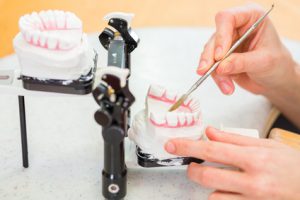
Qualified employees, state-of-the-art technologies and quality control, made in Germany: SAVEDENTAL provides you with a good tooth replacement.
The employees of our partner lab in China are up-to-date and use state-of-the-art technology. This way, you can be sure: You will get the right, affordable tooth prosthesis that will suit your needs.
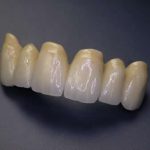 Metal-free full crowns
Metal-free full crowns
This high-quality all-ceramic material has been very popular for years. Zirconium oxide is metal free, very stable, well tolerated by the body and can be processed to obtain an aesthetically pleasing effect.
Advantages
Zirconium oxide shows its strength especially on highly stressed parts of teeth. It is also used to make crowns and bridges due to its ability to isolate the tooth from cold and heat, this way protecting the pulp. Zirconia is often the first choice when metal free prostheses have to be made.
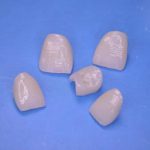 A high-quality alternative to metal
A high-quality alternative to metal
Dental prostheses often consist of a metallic base and a ceramic veneer, for example in the form of a crown.
The presence of different kinds of metals in the mouth may lead to tension – in the truest sense of the word. This situation causes electrons to flow. In addition, metals can be the cause of allergies and other intolerances. In some conditions such as rheumatism, the use of metals in prosthodontic restorations should be avoided.
Advantages
In order to prevent incompatibilities and achieve a high-quality, aesthetic overall picture the restoration is often composed of a ceramic base and ceramic top. Which are usually made with zirconium oxide or some other ceramic material.
All-ceramic restorations correspond with the natural structures of the tooth, have a stable form, are biocompatible and can withstand heavy stress, like during chewing.
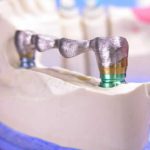 Almost like your own teeth
Almost like your own teeth
An implant is an artificial tooth root that is screwed tightly into the bone of the jaw. This way individual teeth can be restored. Several artificial roots can be placed next to each other. The dental restoration is put on top of the implant. Implants can be made of metal or ceramic. Different techniques can be used to restore the tooth using implants.
Advantages
Implants are the best solution for total tooth loss. They can rebuild the natural occlusal conditions, prevent decreasing of jaw bone height caused by the lack of stress and form a solid, high-quality base for long-lasting prosthodontic restorations, which look like natural teeth.
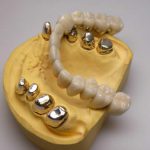 Flexible and upgradeable through bridges and crowns
Flexible and upgradeable through bridges and crowns
Existing teeth are covered by a telescope crown cap. These form the base for a dental prosthesis that is fixed, however can be removed. One example is a telescopic bridge. Telescopic means that the links in the bridge fit the crown cap without friction.
Advantages
Prosthodontic restorations in telescope technology are upgradeable. The denture has to be only removed for cleaning. Removing and inserting the denture is extremely easy. It represents a comfortable alternative when bridges and crowns are not indicated.
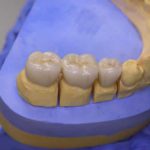 Reliable gap closing
Reliable gap closing
If one or more teeth are missing, this often stresses the entire stomatognathic apparatus, which can lead to damage of other teeth, the jawbone and the masticatory muscles.
Fixed bridges are a reliable way to close gaps. The neighbouring teeth play the role of “anchors” which are prepared and crowned.
Advantages
A bridge is a stable, reliable solution for the total loss of one or more adjacent teeth. If only one tooth is defective, a crown may be a better solution.
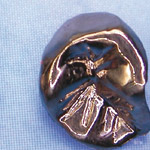 For minor tooth damage
For minor tooth damage
Inlays or onlays are indicated for teeth with minor caries. The dentist only removes the damaged part of the tooth and replaces it with a filling – made of gold, plastic or ceramics. The more accurate the filling is, the longer the tooth can be retained.
Advantages
Onlays and inlays made from ceramics are especially well tolerated by the body and are exceptionally aesthetic, perfectly resembling natural teeth. They are indicated for small and medium-sized tooth defects. They are also used for replacing amalgam fillings.
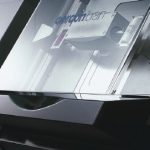 Cost-effective production
Cost-effective production
Non-metallic crown frameworks made of zirconium oxide or a non-precious metal alloy can be produced cost-effectively and precisely using computer-controlled milling technology. The CAD / CAM technology does not require heat during processing, which protects the material and prevents process-related defects.
Advantages
The CAD / CAM technology shortens the production process and thus reduces costs. The same quality as ceramic products is maintained.
